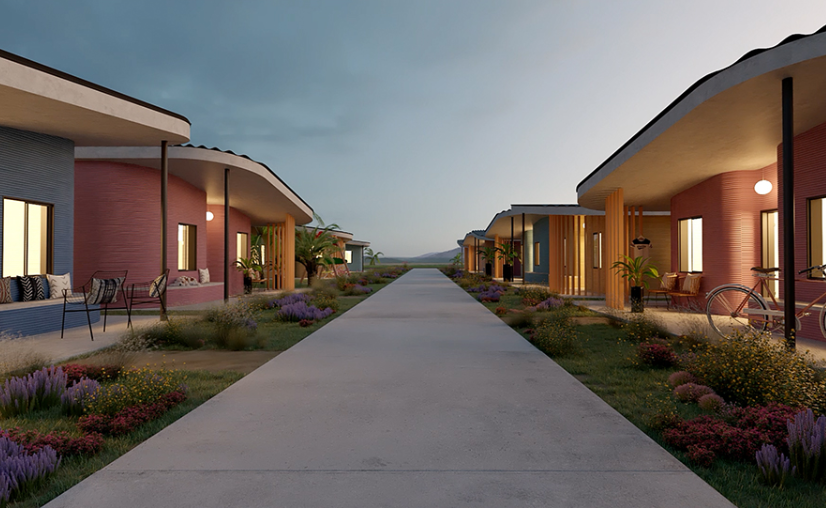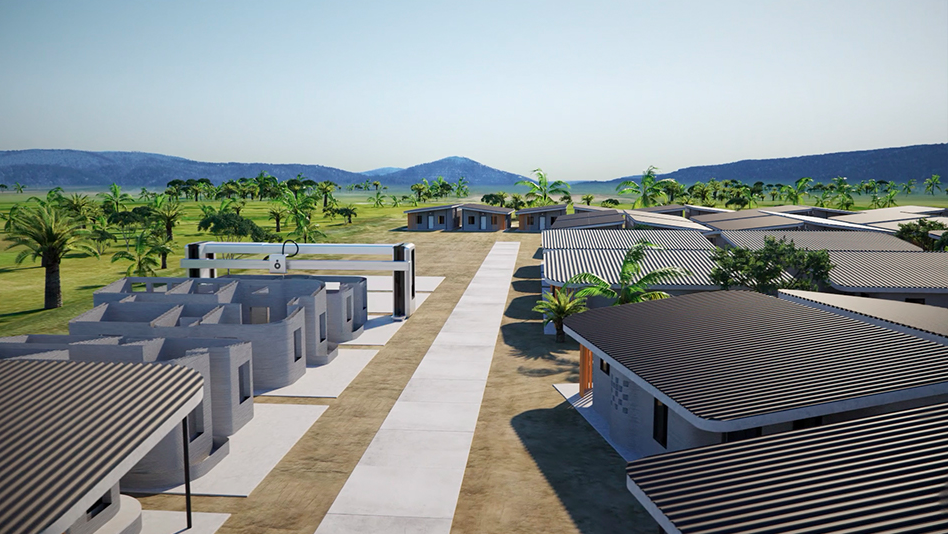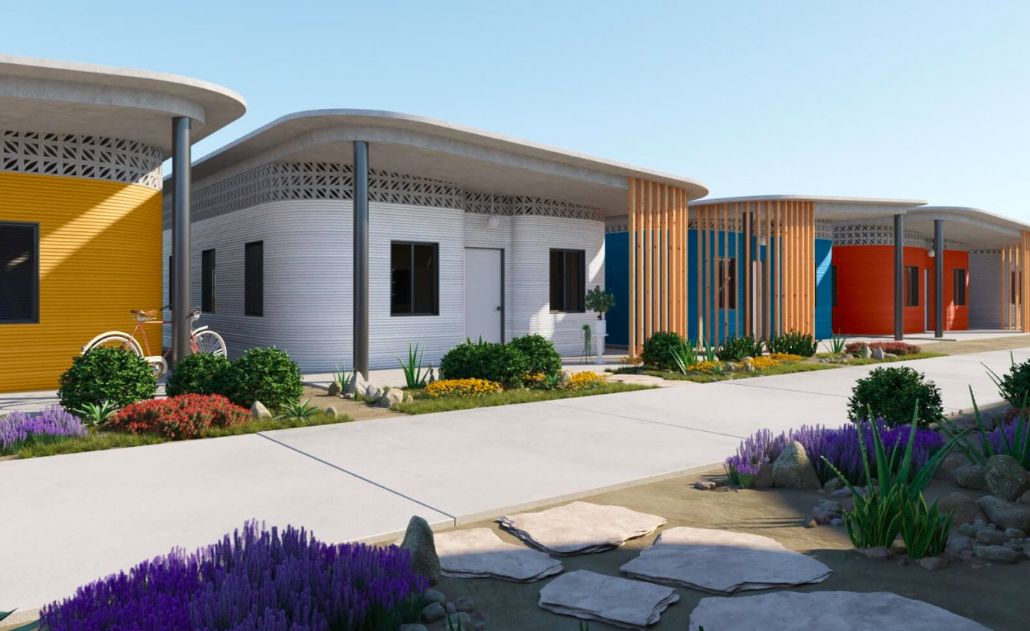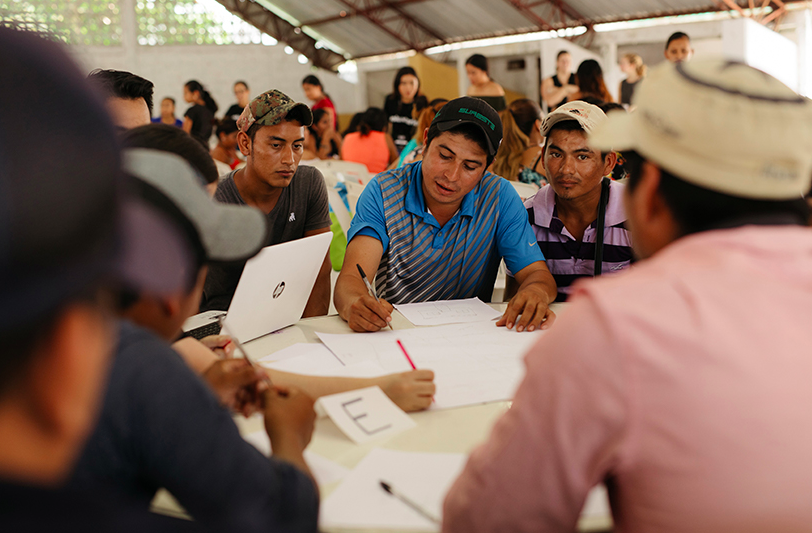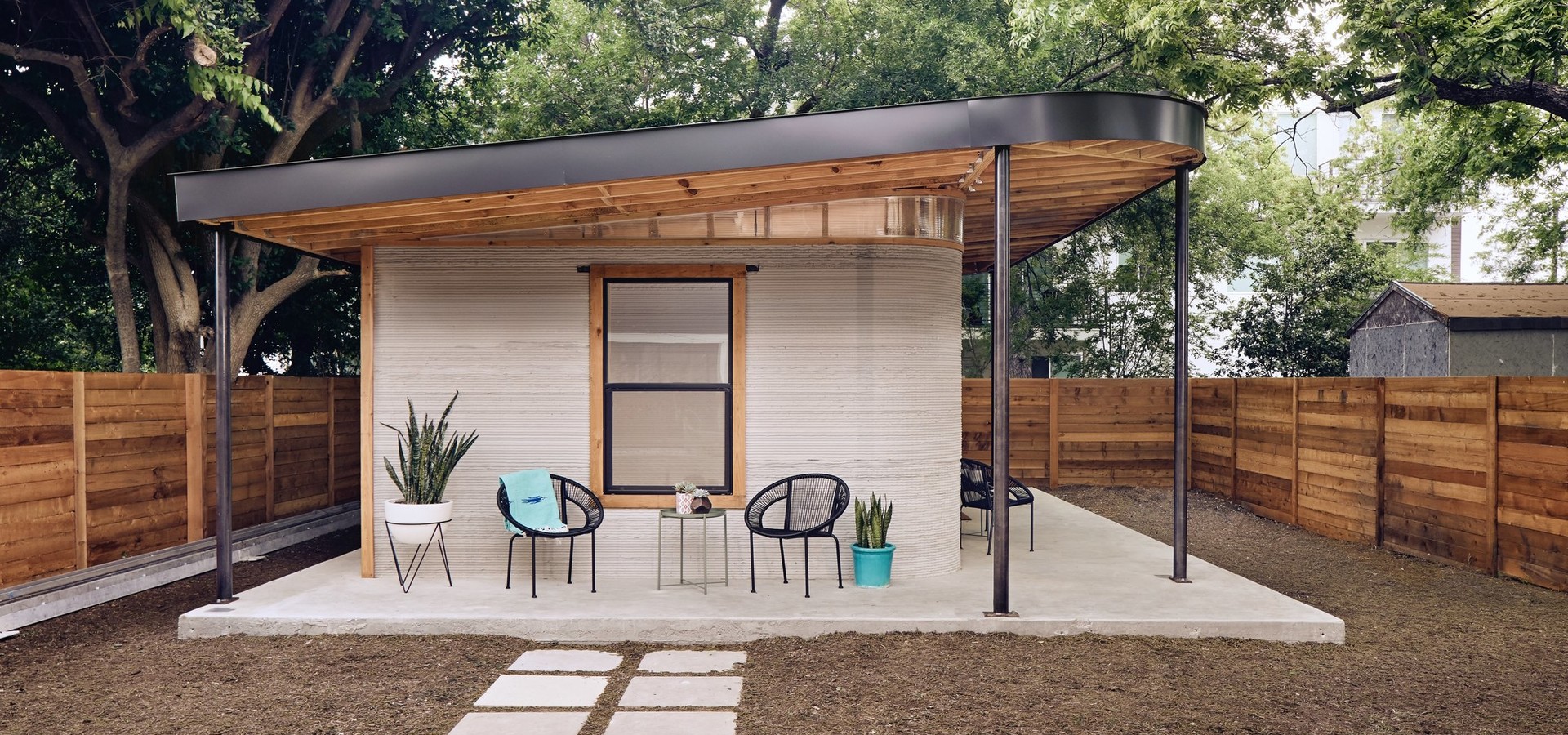In an unnamed city somewhere in South America, construction is set to begin on a 3D-printed village designed specifically for families living on less than $200 per month. San Francisco-based design studio Fuseproject is collaborating with New Story, a non-profit organization fighting homelessness, and ICON, a construction technologies company to plan and build what they call “the world’s first 3D-printed community.”
“It is our belief that designers, builders and technology innovators have the potential to bring unprecedented speed and scale to housing design that can elevate the lives of some of the most impoverished populations around the globe. 3D printing, in particular, offers a new and powerful tool for realizing this potential and driving this mission forward. We will deliver this groundbreaking method of homebuilding to families in Latin America who need affordable housing that adapts to their day-to-day lives.”
“We worked directly with the communities that we were designing for to learn more about their culture and environment to ensure that we were providing options that respond to their housing needs in ways that extended beyond single traditional home design. We used 3D technology and the unique design possibilities it enables to provide solutions that addressed important questions related to climate, family structure and the role that the homes play in creating a larger community.”
When finished later this year, the community will house more than 400 individuals. Residents will be able to personalize their homes, including the layout, number of bedrooms and color of the exterior. They’re being offered zero-interest loans, and amount they pay will vary depending on their income, with that money going into a shared fund to pay for other community resources.
It’s definitely achievable. ICON has already proven the concept with the first 3D-printed home in America using a combination of robotics, software and a cement-based mixture that can be extruded easily, bonds well between layers and hardens quickly. This proprietary mix called “Lavacrete II” has a compressive strength of 6,000 psi, which is well above the strength of existing building materials, as well as high thermal mass and the ability to withstand extreme weather conditions to minimize the impact of natural disasters. Combined with 3D printing technology, it enables rapid build times at a lower overall cost.
